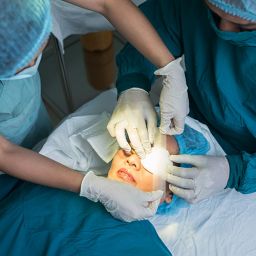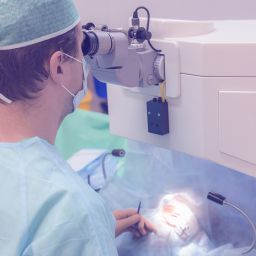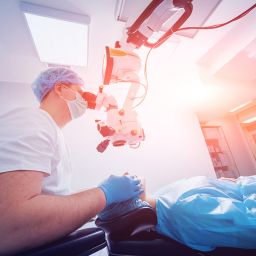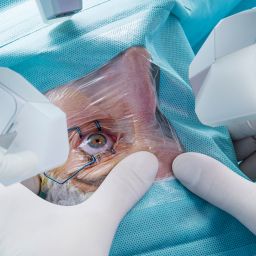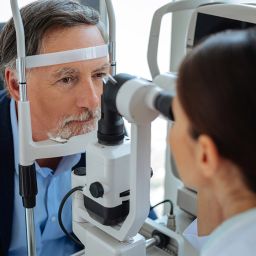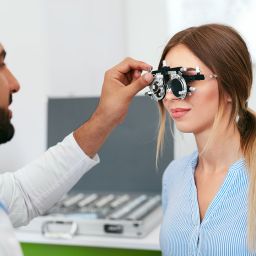
Frequently Asked Questions About RLE Surgery
The thought of getting a complete lens removal and replacement is enough to get some people anxious and worried.
Refractive Lens Exchange is s surgical procedure that many do not know about. But its concept often worries patients after a recommendation from a doctor.
The procedure sees the surgical removal of your natural lens, then replaced with an artificial one to correct vision.
It is normal to feel scared or anxious after a doctor recommends eye surgery to improve vision. Just ensure that your fear does not let you back out of the procedure.
A good way to ease your worries and anxiety is by learning about RLE surgery as much as possible.
Luckily, we can answer all your burning questions about the procedure. So calm your nerves, and keep scrolling for insightful information about RLE.
Commonly Asked Questions About RLE Answered
1. What does RLE surgery do?
Refractive Lens Exchange surgery replaces your eye’s natural lens with an artificial Intraocular Lens (IOL). The process then corrects your vision and improves focus.
RLE surgery is similar and sometimes confused with cataract surgery. Cataract surgery is the most common eye surgery worldwide.
The difference is that in RLE, the natural lens is not cloudy. Additionally, the primary goal of RLE is to reduce dependency on glasses and contact lenses.
2. Is RLE surgery ideal for me?
RLE is an ideal treatment for people with astigmatism, shortsightedness (myopia), and long-sightedness (hyperopia).
However, you need a few basic qualities to be ideal for the procedure. For starters, you need to be over the age of 45, with stable vision for at least six months before the surgery.
RLE is also ideal for bifocal or multifocal lens wearers,
3. Does RLE surgery hurt?
Patients report feeling no pain or discomfort during an RLE procedure. This is because surgeons perform the procedure under local anesthesia.
After the surgery, some patients report mild discomfort and irritation but no pain. This is normal and should last a few hours after the surgery.
You can use over-the-counter painkillers to ease irritation and discomfort if it persists.
4. Will I be awake for RLE surgery?
Throughout the procedure, you will remain awake but sedated .. Before surgery, you will receive eye drops to numb the eyes so there will no pain.
Can I get RLE surgery on both eyes in one appointment?
It is advisable to get RLE surgery on one eye at a time to be cautious.
After the surgery, you will experience some downtime characterized by blurry vision, glare, and halos.
6. Can I go back to work after RLE surgery?
Most patients can resume work after 1 to 2 days. However, it differs from patient to patient.
You will need at least 24 to 48 hours before confidently returning to normal activities.
7. How much does RLE surgery cost?
Expect to pay about $6,000 to $8000 per eye for an RLE procedure. RLE surgery is significantly more expensive than LASIK and other procedures.
This is because it completely replaces your natural lens with an artificial one.
The cost varies depending on the institution or surgeon. However, it is important to note that insurance does not cover RLE
procedures because they are elective.
8. How long does recovery take after RLE surgery?
It takes between 5 and 7 days to recover from RLE surgery.
The procedure takes about 20 minutes per eye. After this, you will rest in the recovery suite for 30 to 45 minutes. The doctor will check on you before your discharge.
Then, you will have 24 hours of downtime where you cannot drive or participate in other activities.
Afterward, you can go back to work and have normal vision in 5 to 7 days. Your doctor will check on you 1 to 3 weeks after your procedure.
You should have great, non-blurry vision in a short time.
9. Are RLE surgery results permanent?
The results are permanent. However, the need to use spectacles and contact lenses depends on your vision and the lens you chose for the procedure.
Some people may need weak spectacles when reading small texts, reading in the dark, or driving at night.
However, you can do most basic activities without glasses. The goal of RLE is to reduce dependency on visual aids.
10. Will I experience side effects after RLE surgery?
Most patients will not experience any side effects. However, those that do will get minimal side effects.
You may experience temporary blurring for a few days. Additionally, you may experience light sensitivity. However, this only lasts for a few weeks.
You may also experience halos and rings around lights, plus glare at night. You could also have difficulty seeing at night.
Again, this will clear in a few weeks.
11. Are there any risks of RLE surgery?
Essentially, RLE has the same basic risks of any surgery which includes bleeding, infection, and the need for further surgery. Thankfully, the risks of complications is quite low with the procedure.
12. Where can I get RLE surgery?
You can get RLE surgery from a qualified ophthalmologist. Ensure that the intuition is certified to perform RLE and other eye procedures. Additionally, ensure that your surgeon is experienced and fully licensed.
You can also come to Anaheim Eye Institute for your RLE procedure. We have qualified specialists who will take care of your visual needs. Trust us to restore your vision.



